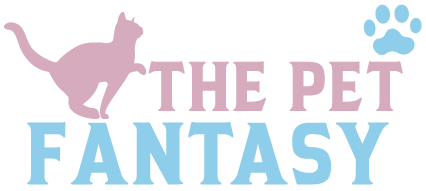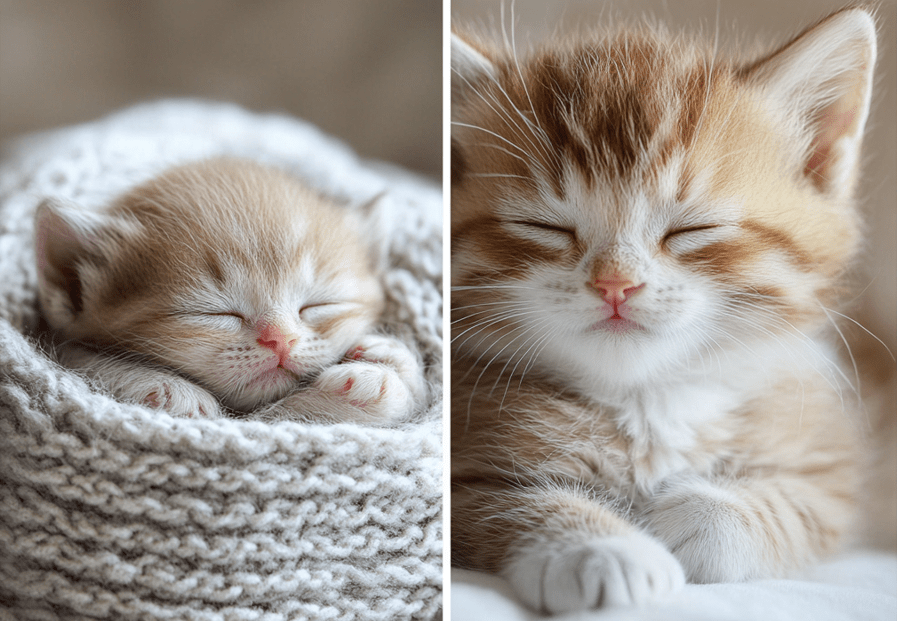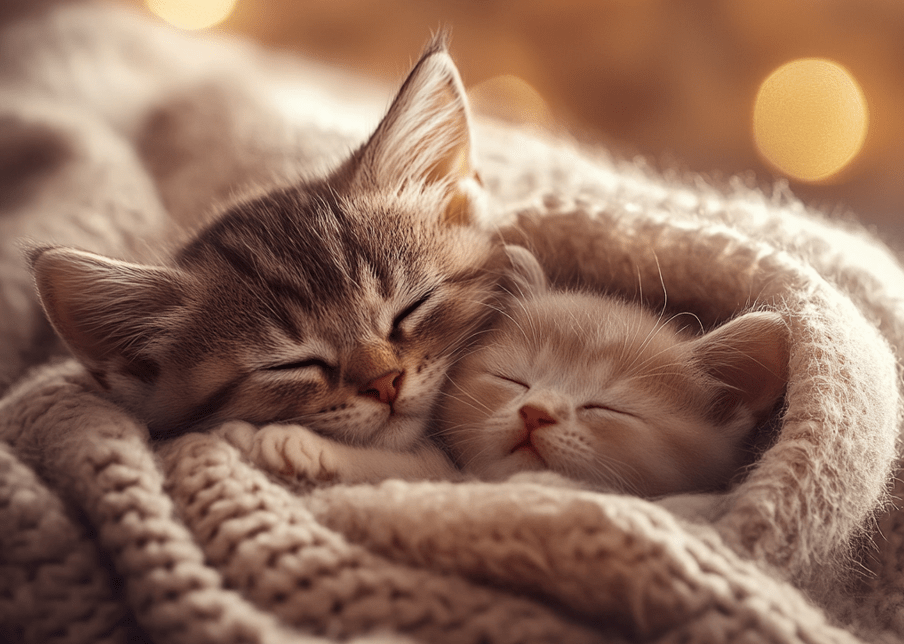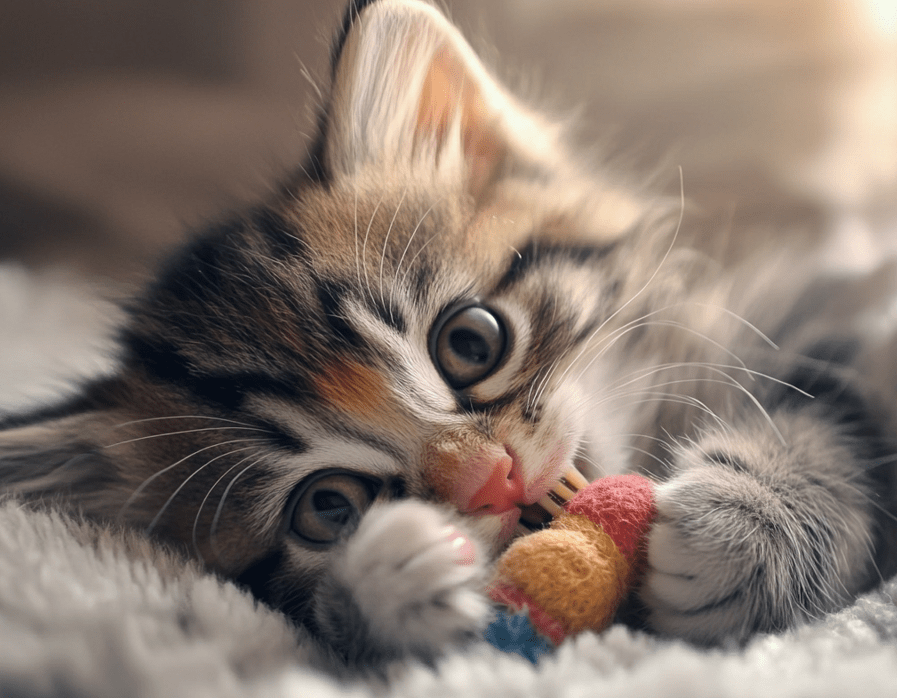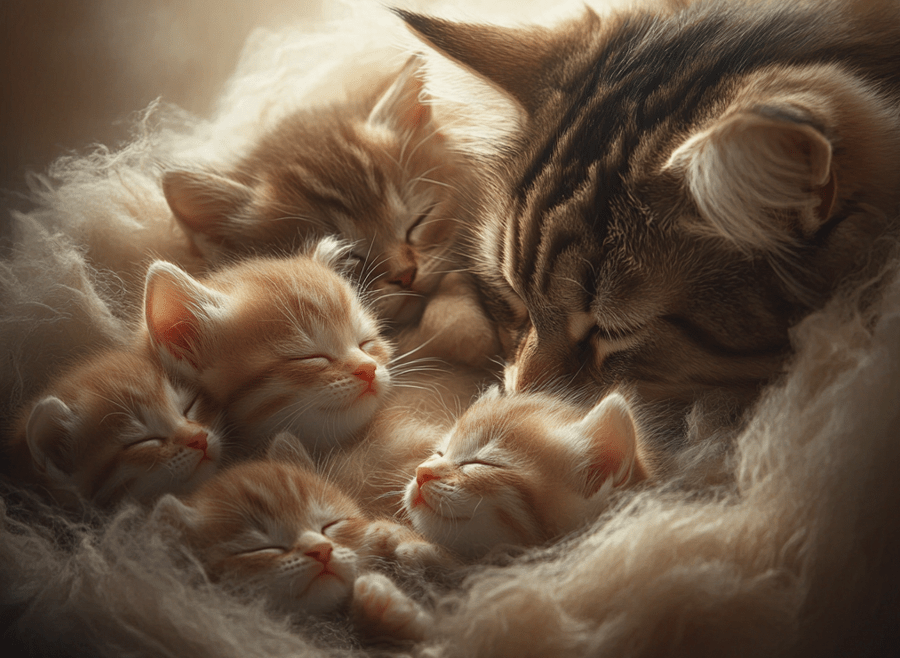
A wonderful socialized cat will have excellent socialized kittens. Kittens that are calm toward people have mothers that are also calm, while fearful kittens usually have similar-spirited mamas. Kittens of course feeding time is very important not only as a good way to get used to petting kittens but also to get them good social skills too.
Kittens are often weaned at 6 or 7 weeks, but they may still suckle for comfort as their mother gradually spends less time with them. Kittens left without a mom or weaned too early are more likely to suckle inappropriately as adults. Ideally, kittens should remain with their littermates (or other role model cats) for a minimum of 12 weeks.
Kittens that are orphaned (i.e. bottle-fed) or taken away from the mother and littermates too soon may not develop normal social skills such as learning to send and receive signals, inhibiting their bites, how hard is too hard in play-wrestling etc. Proper exercise is very beneficial for kittens. Because it helps in the physical growth of the kitten, helps in social development and mentally keeps the kitten more cheerful. Kittens learn how to be a cat and interact with their mother and littermates, as well as starting the ranking process (who’s in charge).
Kittens handle a mere 15 to 40 minutes a day during the first seven weeks to grow bigger brains. These are more exploratory, more playful, and more effective learners. If you do not learn certain abilities during the first 8 weeks, the neurons may die and those life skills are gone forever. Although these stages are crucial and relatively fixed, a cat’s brain remains open to new experiences and teachings long after kittenhood. Most cats remain mentally and physically kittens for the first two years. Their behavior is similar to that of kittens.
The chart below offers a broad outline of the stages of development:
0 – 2 weeks: Neonatal
1.Orienting towards sound.
2.Eyes Opening by two weeks, opened usually
3.Fight to rank and territory starts. Separation from their mother and siblings at this point can result in litter box issues, underdeveloped social skills and aggression towards people and other animals but not limited to other cats.
2 – 7 weeks: Socialization
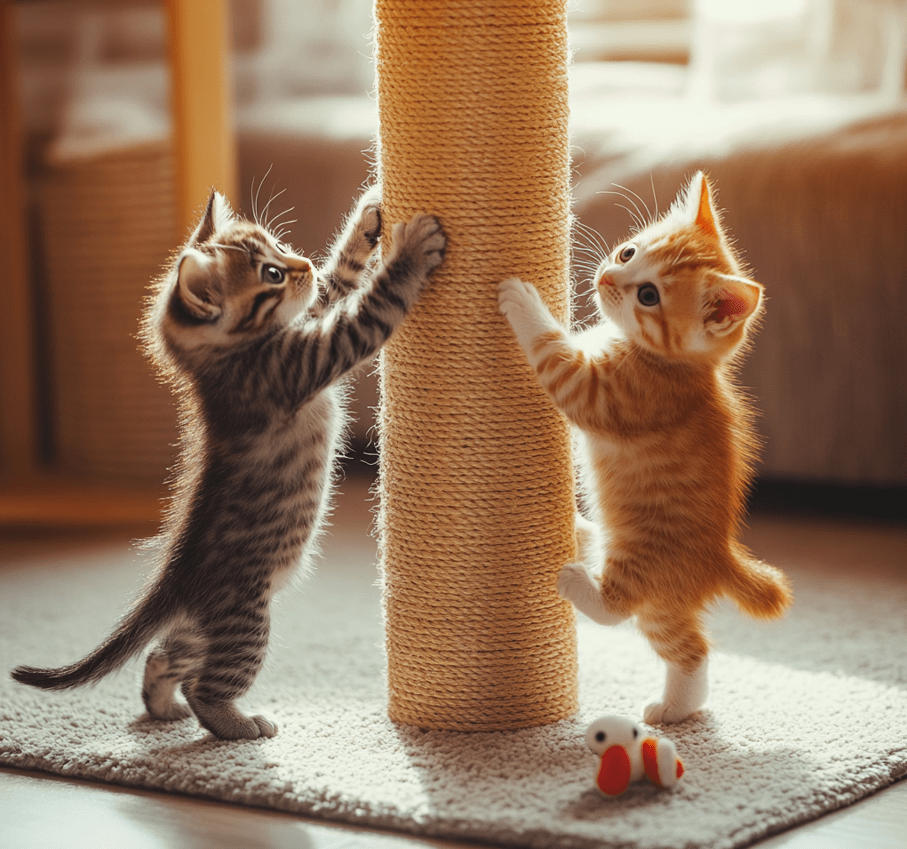
1.In the third week they have a finely tuned sense of smell and can locate their mother by sight.
2.Smell is fully mature and hearing has developed pretty well by the fourth week. They are going to be a couple weeks old and will start physically interacting with their littermates, they are walking pretty well which means teeth should be starting to erupt.
3.At five weeks, their sight is fully developed. They can respond visually in any direction (sight of hunting predators), travel at a regular rate of speed, and place their feet with precision, avoiding obstacles appropriately. They can get to within 6′; away from you undetected.
4.Grooming- begin or increase self-grooming and grooming of others
5.At 6-7 weeks of age, kittens start developing their sleeping patterns, motor skills, social interactions, etc.
7- 14 weeks: Peak active play period.
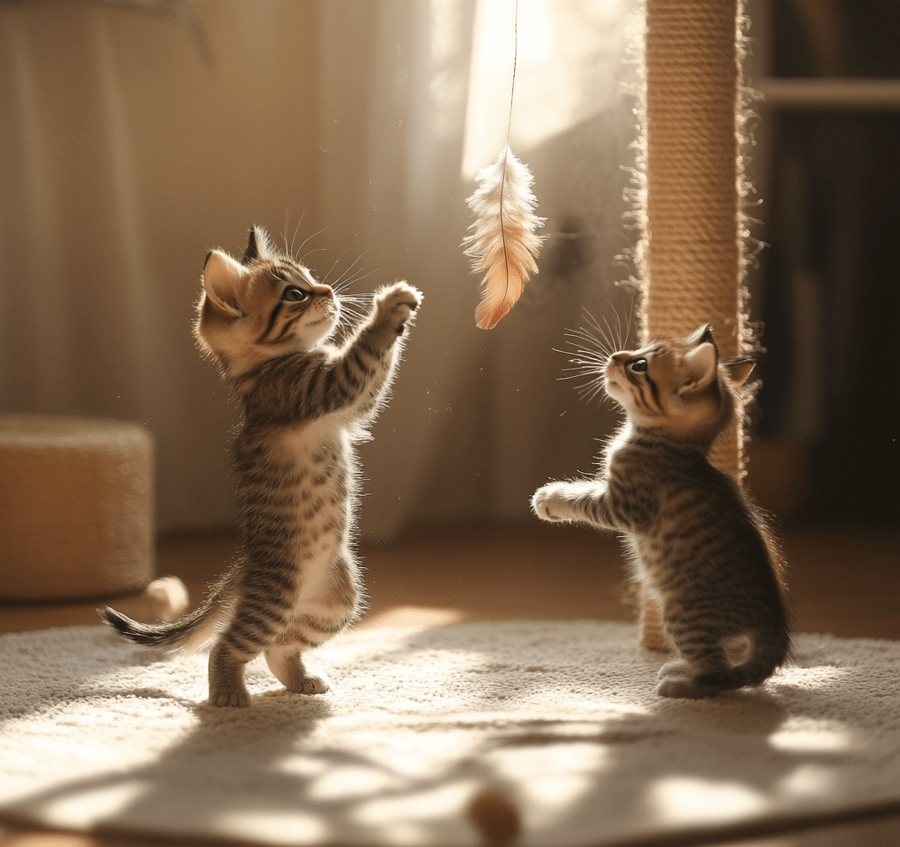
1.Social and object play increases their body coordination and playing with others. They learn mostly by observation, ideally in the presence of their mother.
2.Social play: belly-ups, hugging, ambushing, and licking
3.Object play: stuff scooping, tossing, pawing, mouthing and holding
4.Social & object play — tail wagging, pouncing, dancing.
3 – 6 months: Ranking period
1.More affected by their “siblings” (playmates now include two- and four-legged species)
2.Already showing and starting to test ranking, including humans in the house.
6 – 18 months: Adolescence
1.Increased focus on dominance/competing with humans
2.Early sexual behavior if not spayed/neutered.
How to get your kitten to stop playing so rough
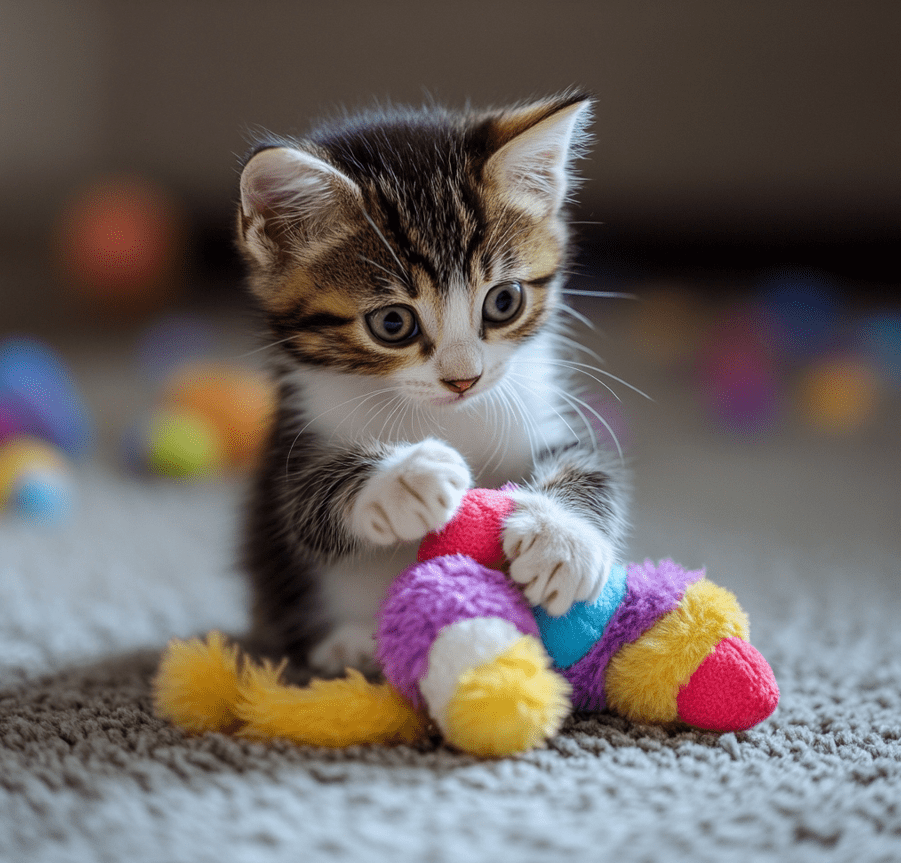
Cats with play-motivated aggressive behaviors are typically young, active cats less than two years of age and the aggressiveness often occurs in one-cat households. When cats play, they engage in a suite of behaviors that include exploratory, investigatory and predation related behaviors. Play gives kittens a chance to learn some of the skills that would help them survive in the wild. Kittens are curious, they love to poke into caves and check out creatures moving around (they can hit or jump on anything that looks like prey).
It is from their littermates and mother that kittens learn to inhibit their bite. A kitten who is Kittens that are separated from their mothers at a young age like orphaned kittens, may play a little rougher or be easily frightened or aggressive. But kittens who get family time aren’t like that. Also if people play with a young kitten by using their hands and/or feet versus toys, the kitten will learn rough play is okay with people. However, some training will help your kitten or young kitten stop playing rough.
Encourage acceptable behavior
Praise them for their good behavior and direct their aggressiveness towards toys instead of people. Pull a toy across the floor and get your kitten to swipe it, toss a toy away from her so that she has to run after it. If you throw it, they might be even more likely to bring the toy back to you.
A good one to buy is a toy your kitten can fight with, like soft stuffed toys small enough for her to grab her two front legs around and kick at the same time with either back foot. An example of how kittens play with each other (having respect to the fact that they can only do this while still young). This is also one of the methods they use to develop human feet and hands, so it needs to be another target. Get a wrestling toy and rub it against your kitten’s belly when she rough plays, make sure you get out of the way as soon as she accepts the toy with open arms.
Kittens love playtime, so try to establish three or four set times throughout the day that you will initiate play with your kitten. This might help her learn that she doesn’t have to pounce on you to start a play.
Discourage Unacceptable behavior
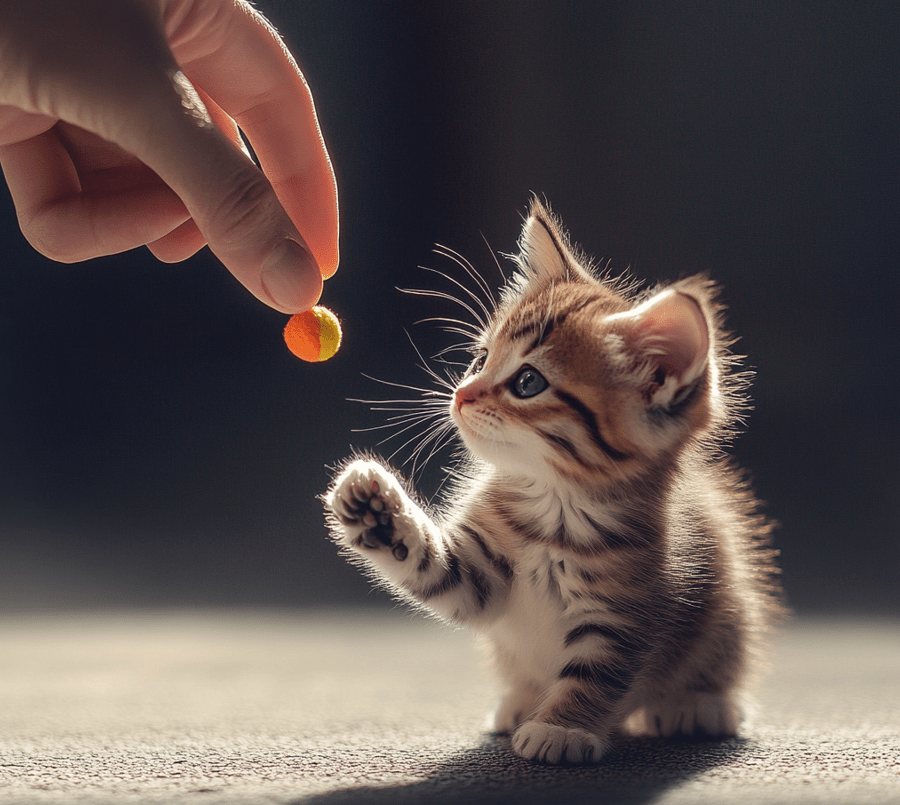
1.You must follow the rules for everyone in your cat and rodent creatures should lodge by them. It is not reasonable to expect your kitten to learn that it can play rough with Dad, but cannot into the baby.
2.Use aversive to discourage your kitten from biting. You can use a squirt bottle with water and a little vinegar in it or something like a can of pressurized air to give your kitten a small squirt when she is becoming too rough. To make effective use of this technique, you will always need to have that spray bottle or can at the ready. Either you put one in each room, or You can take it with you while moving around the house. You can use taste aversive to apply the taste of them to your hands in some cases. If you have sensitive skin, you should wear gloves and apply the aversive to the gloves. A downside to this method may be that your kitten will associate “hands with gloves taste bad and those without gloves don’t.”
3.Redirect behavior after you use an aversive. As soon as you catch your kitten with the aversive, provide her with a toy to pounce on or run after. This will help her learn to focus that rough playing onto a toy, rather than a person. So it is a good idea to keep some hidden in every room and just pull them out discreetly.
4.Ignore your kitten if they get too rough. The most extreme step you can take to stop your cat from her rough play is to cease all attention when she gets carried away if the distraction and redirection gusto are not doing the trick. If you enforce this boundary she will think of a way to play with you, and test out just how much she can get away with over time.
The best way to disengage is to walk away into another room, close the door and leave her there for a few minutes until she calms down. When you physically pick her up to move her into another room, she learns that this is a reward. You should then leave the room.
Important note: None of these are very effective without also providing your kitten with healthy ways to expend her excess energy – playing interactive games at least twice daily using acceptable toys.
What not to do
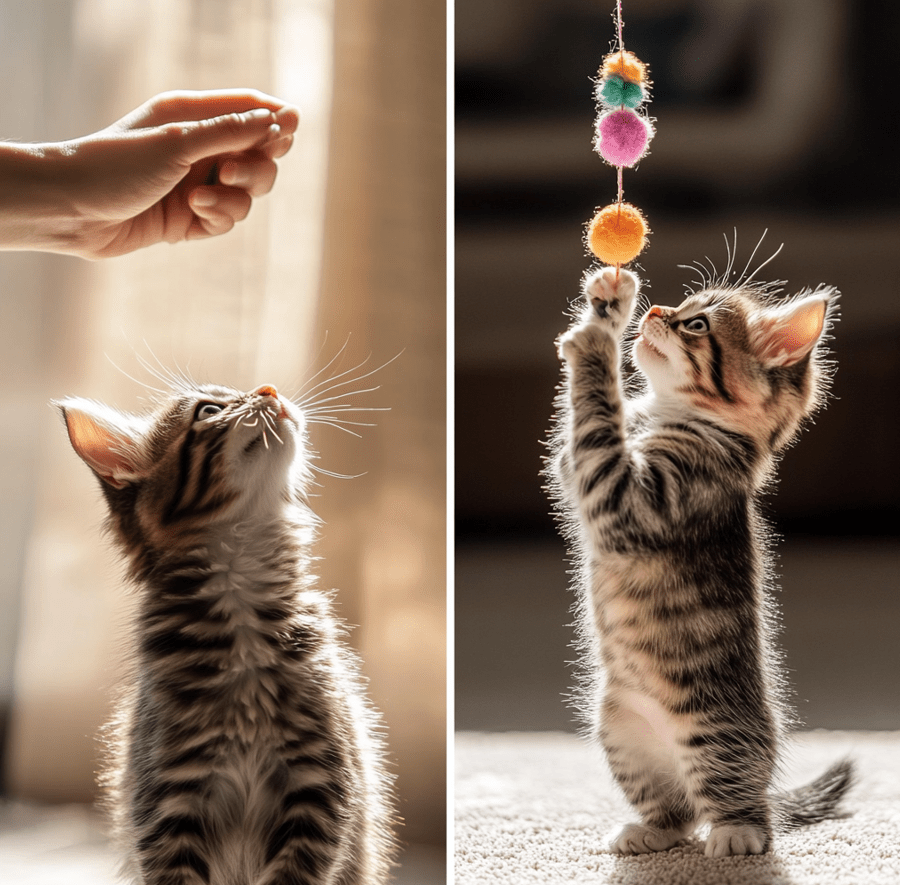
You trying to tap or flick your kitten for playing too rough are likely going to backfire. Your kitten may learn to fear your hands, or those flicking movements could be seen as an invitation to engage in rougher play.
For example, if you pick up your kitten to put her in “timeout” then that could just be reinforcing the behavior again because she enjoys physical contact like being picked up. She will have surely forgotten why you put her there by the time you even get her to the timeout room and close the door.
Aggression
Kittens may be able to sink their teeth or claws into your skin. In these cases it is best to get help from a behaviorist who can deal with the kitten. Take the kitten away until you have someone with more experience come and help you out. Additionally, make certain to properly clean all bites and scratches, as they are easily infected; seek your primary physician.
